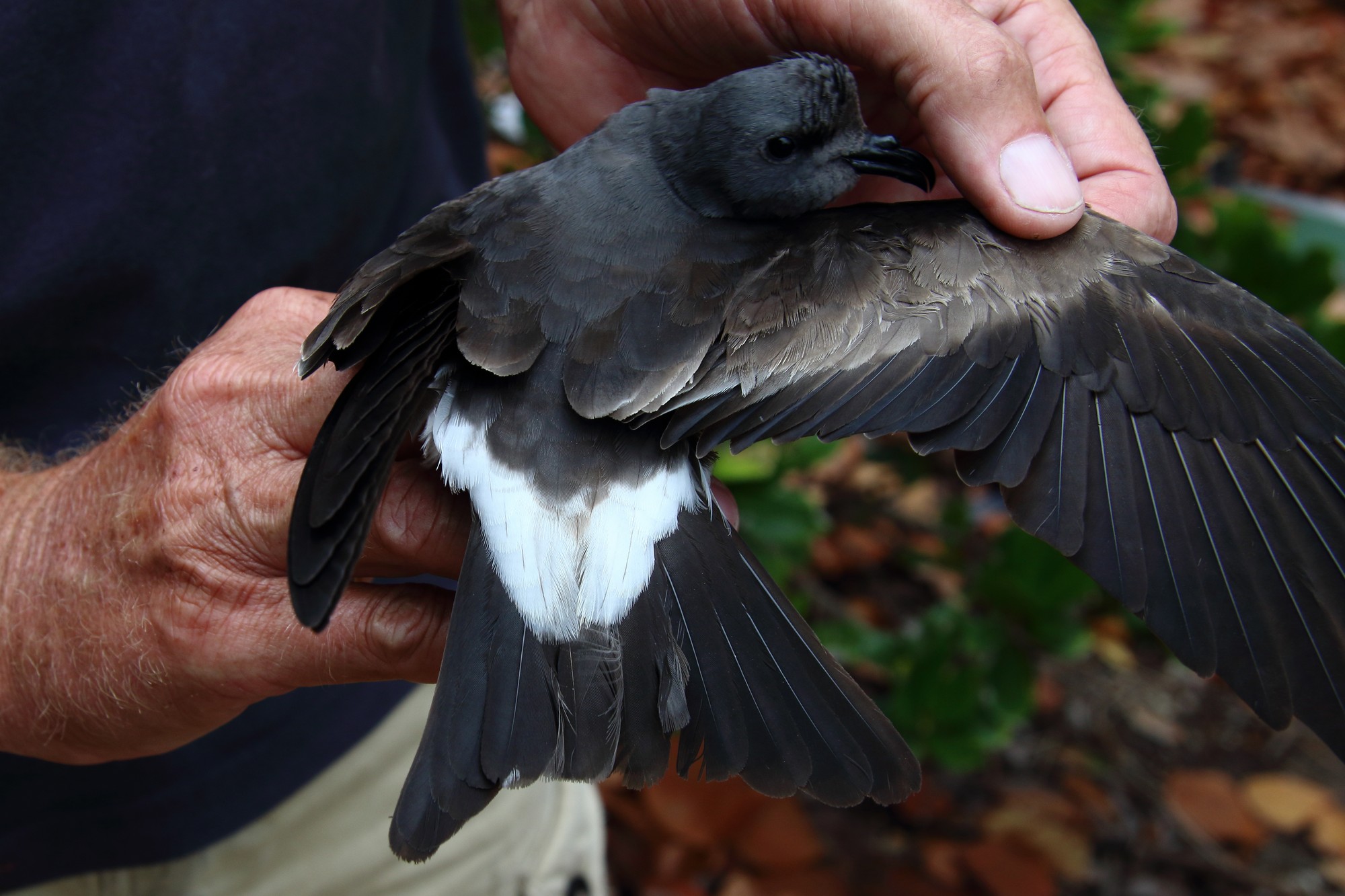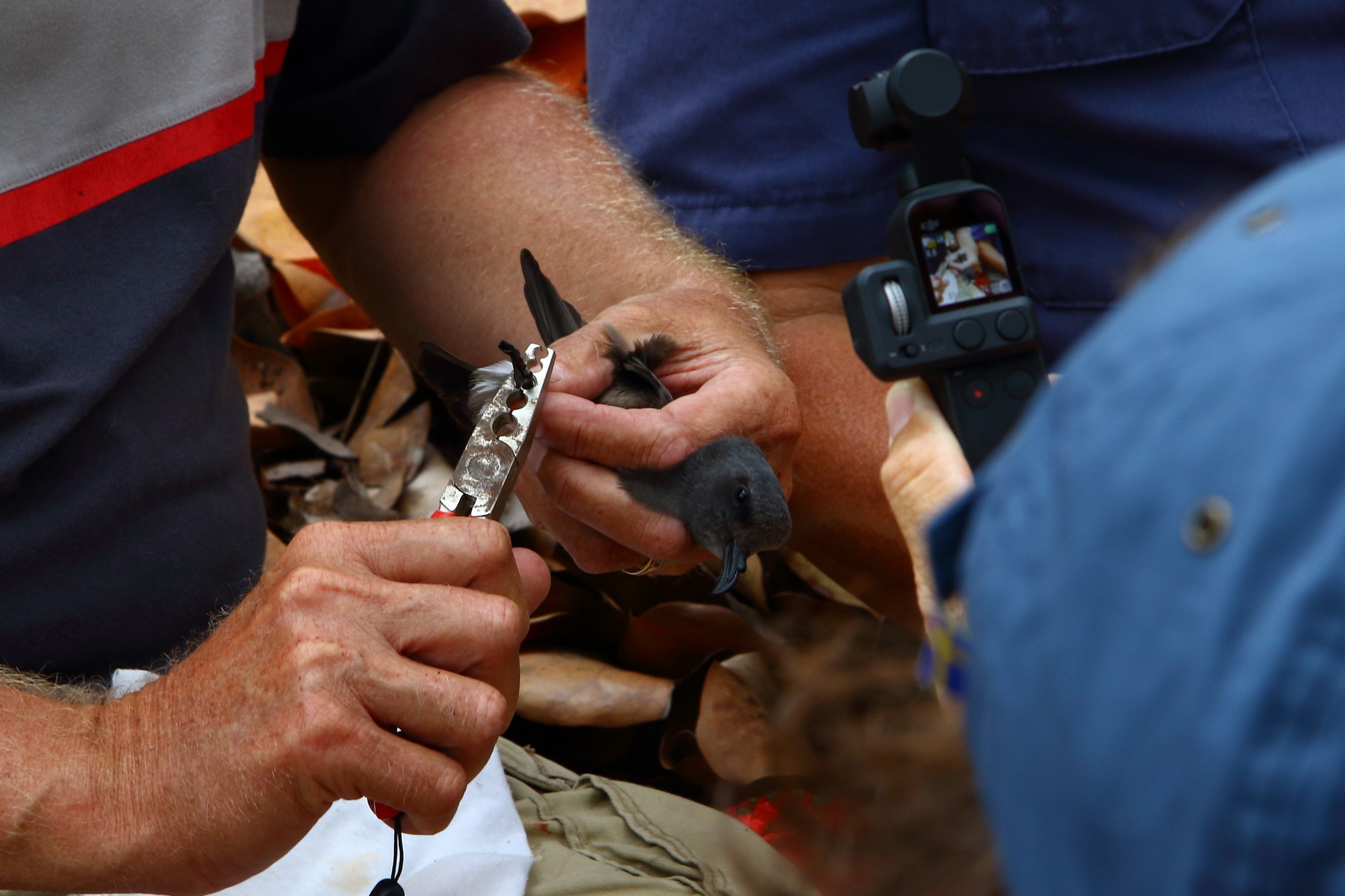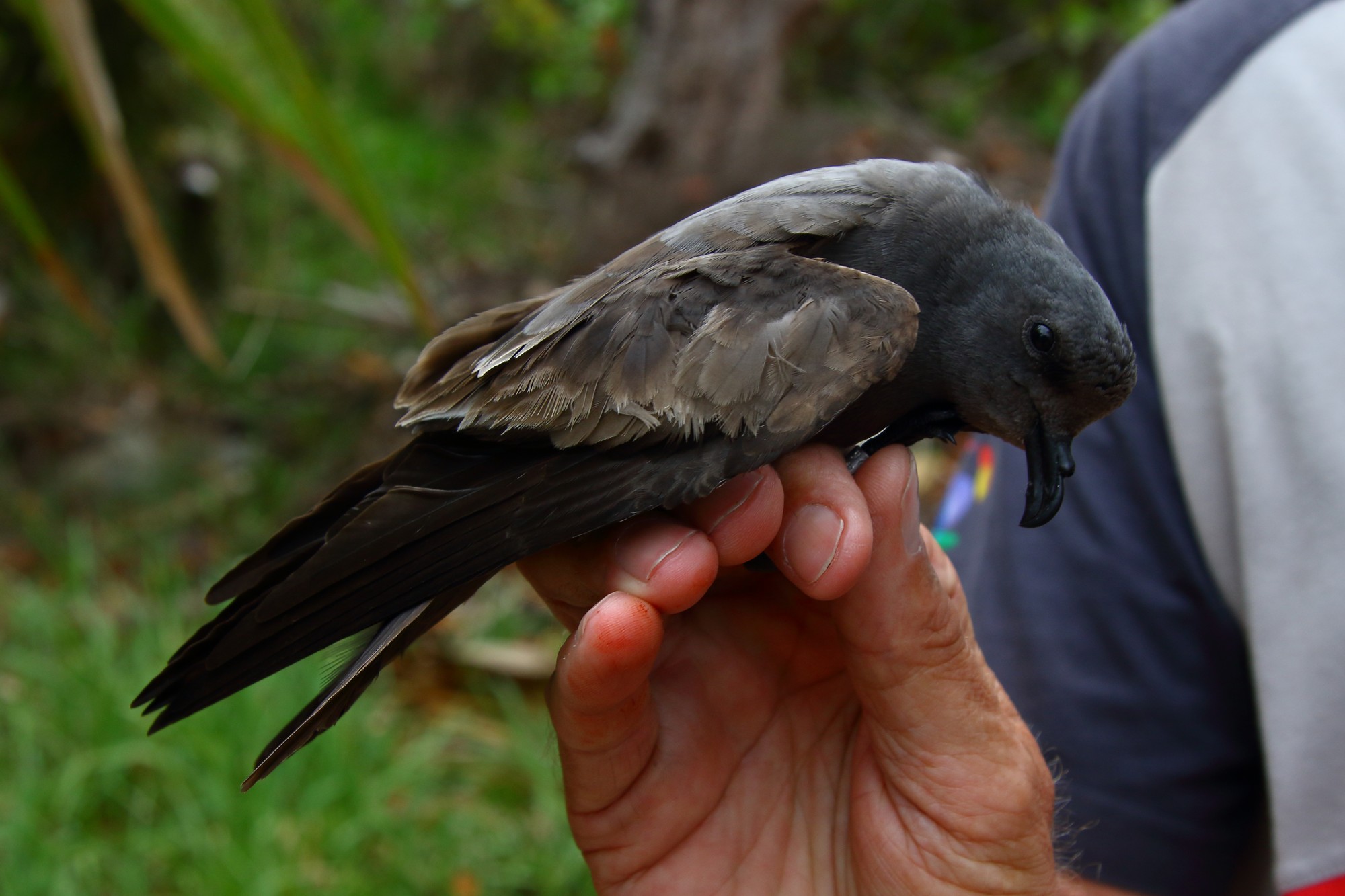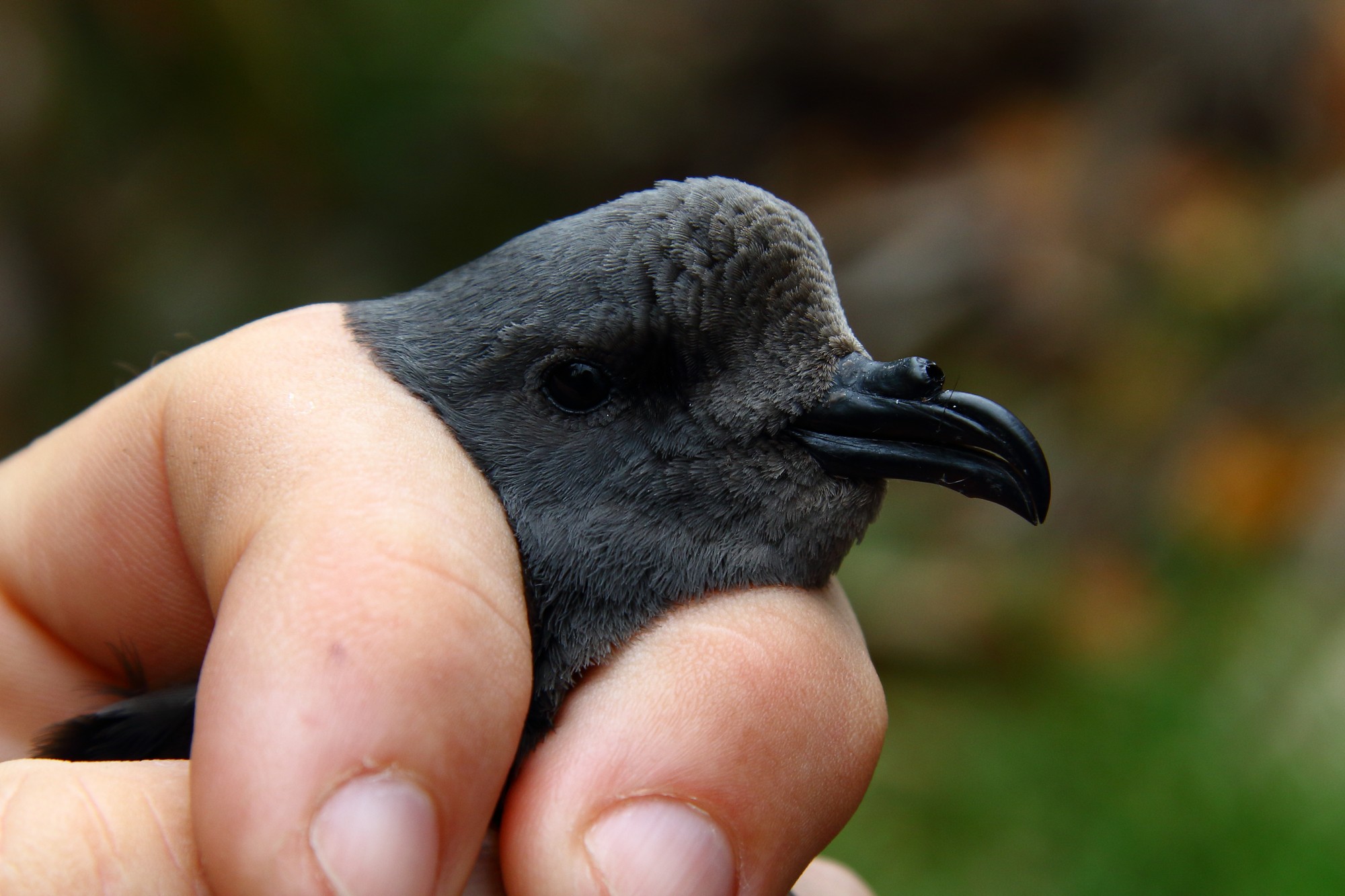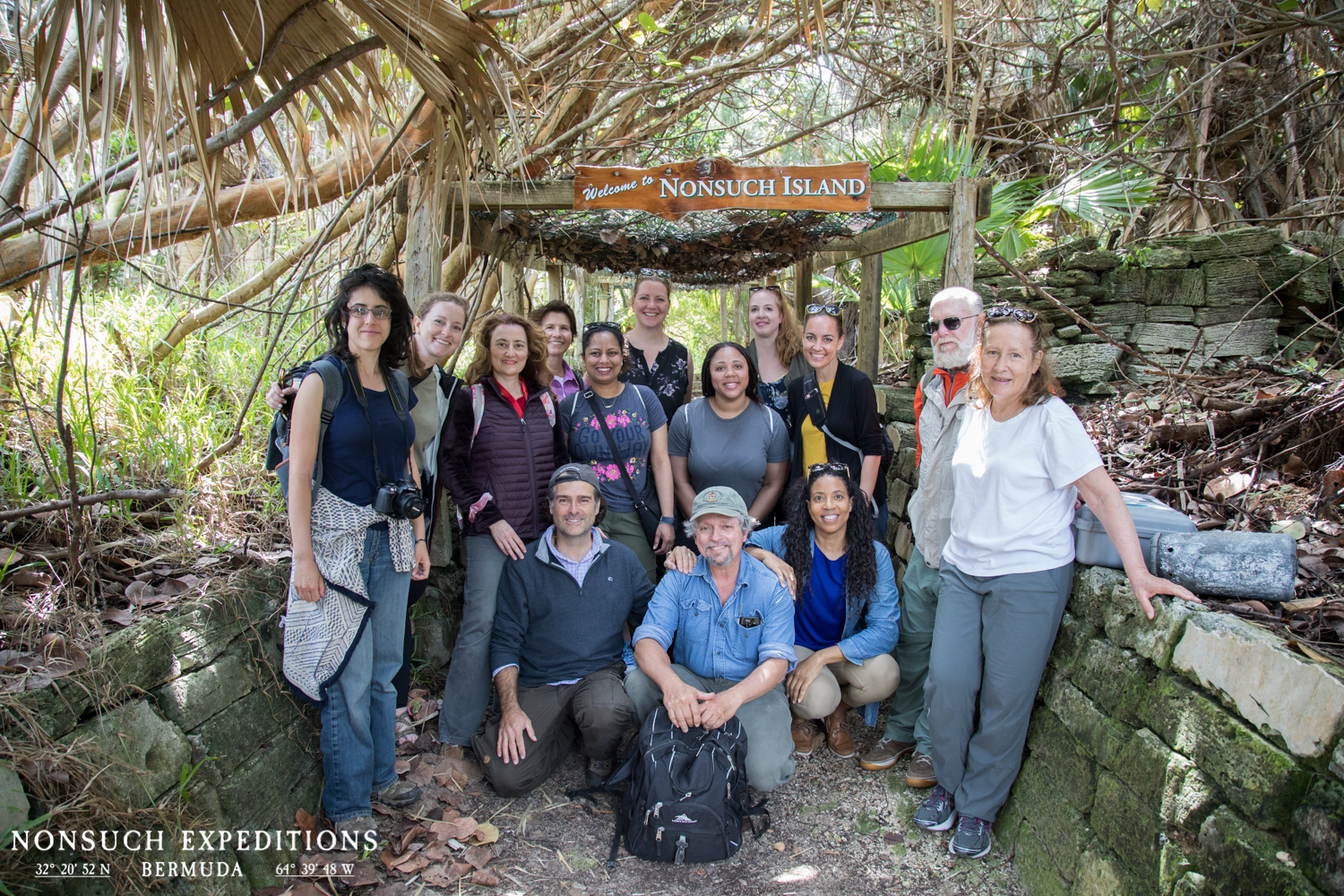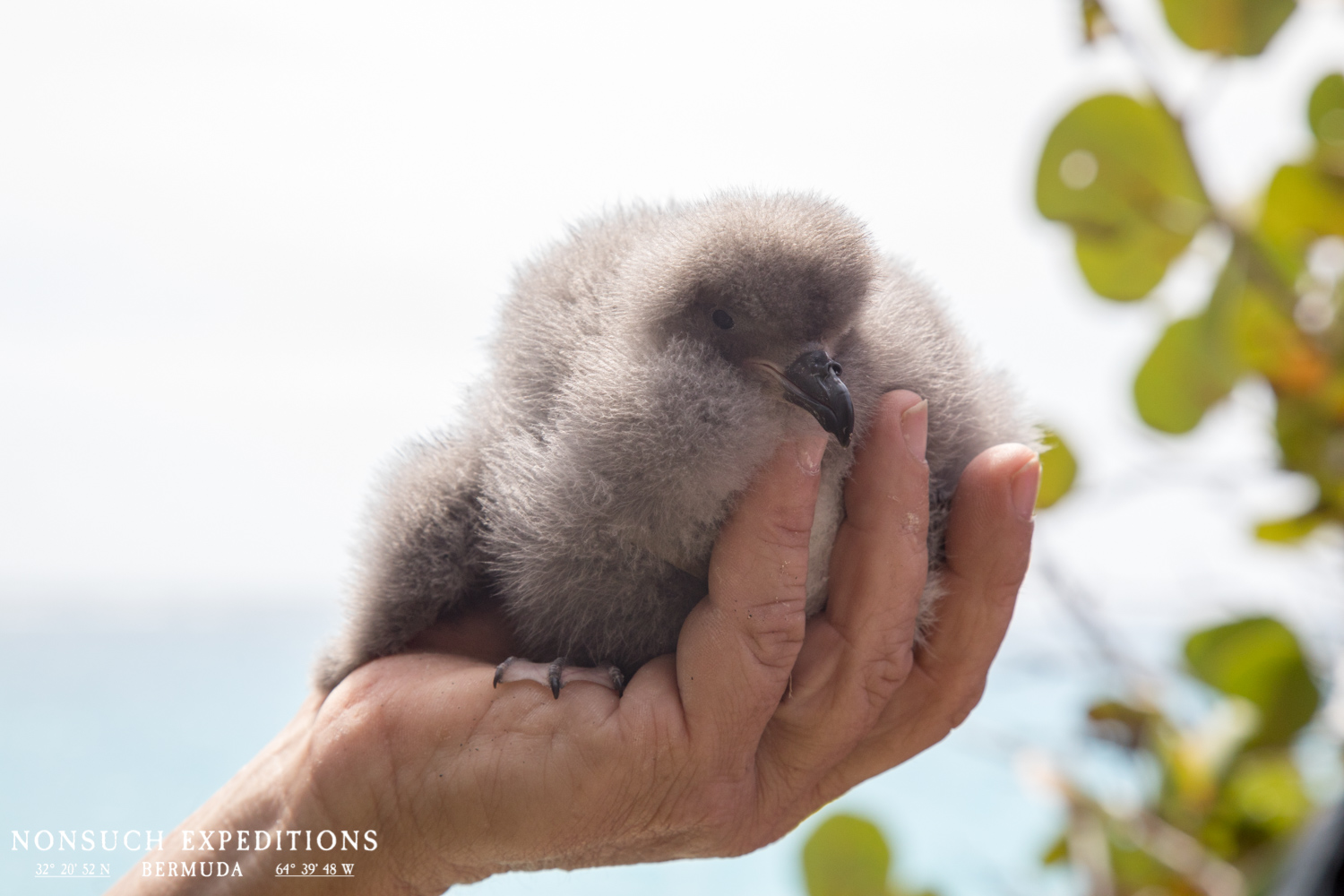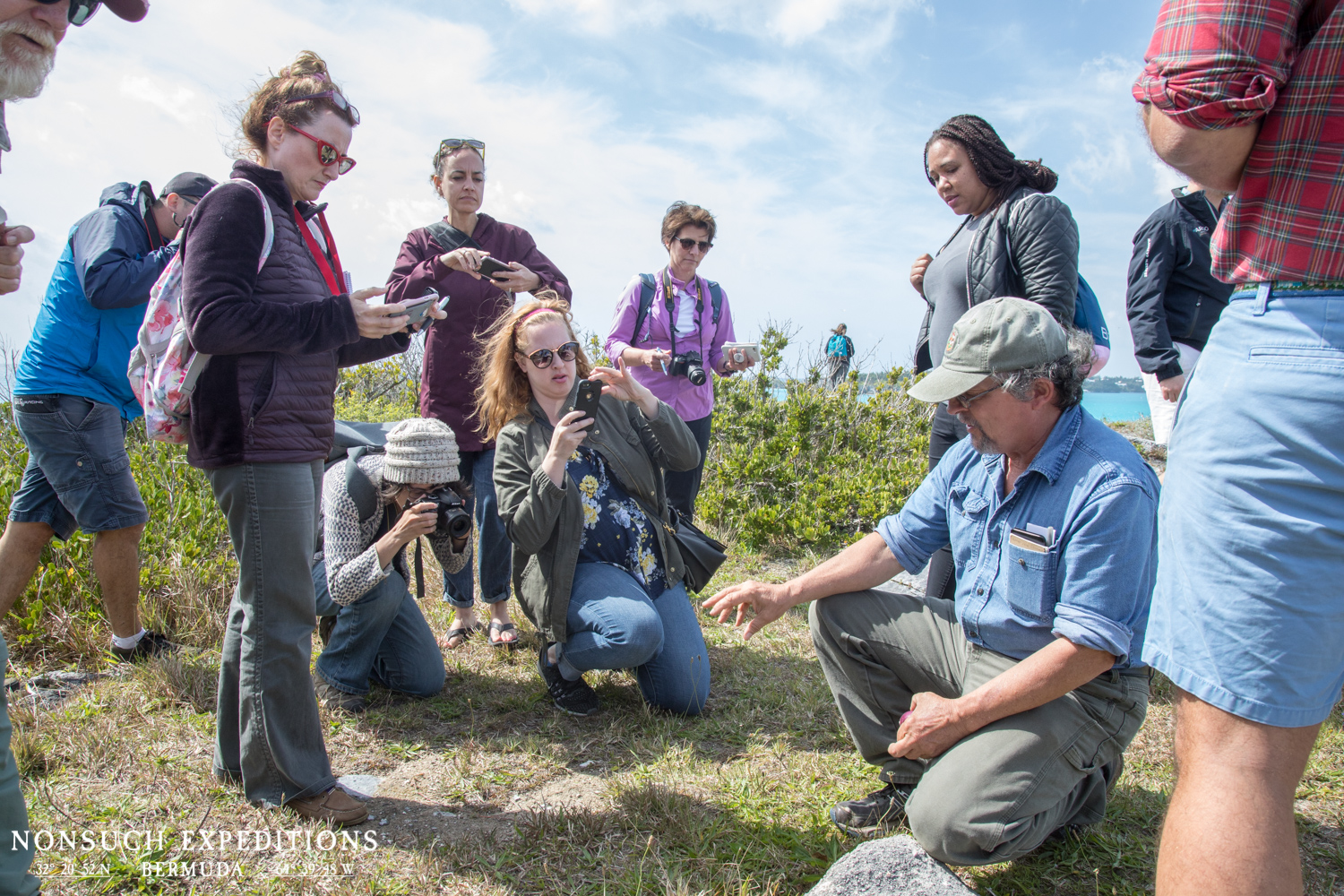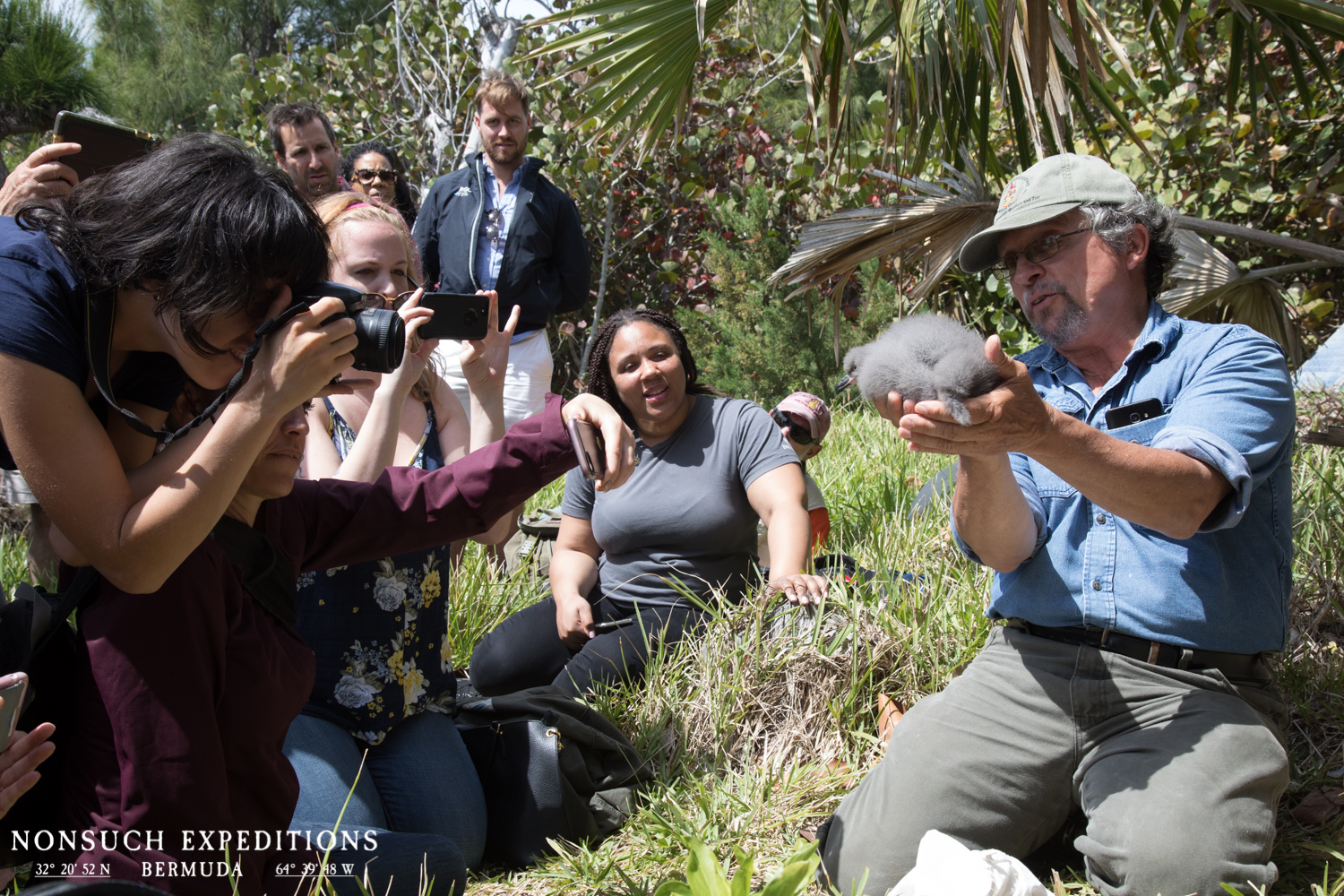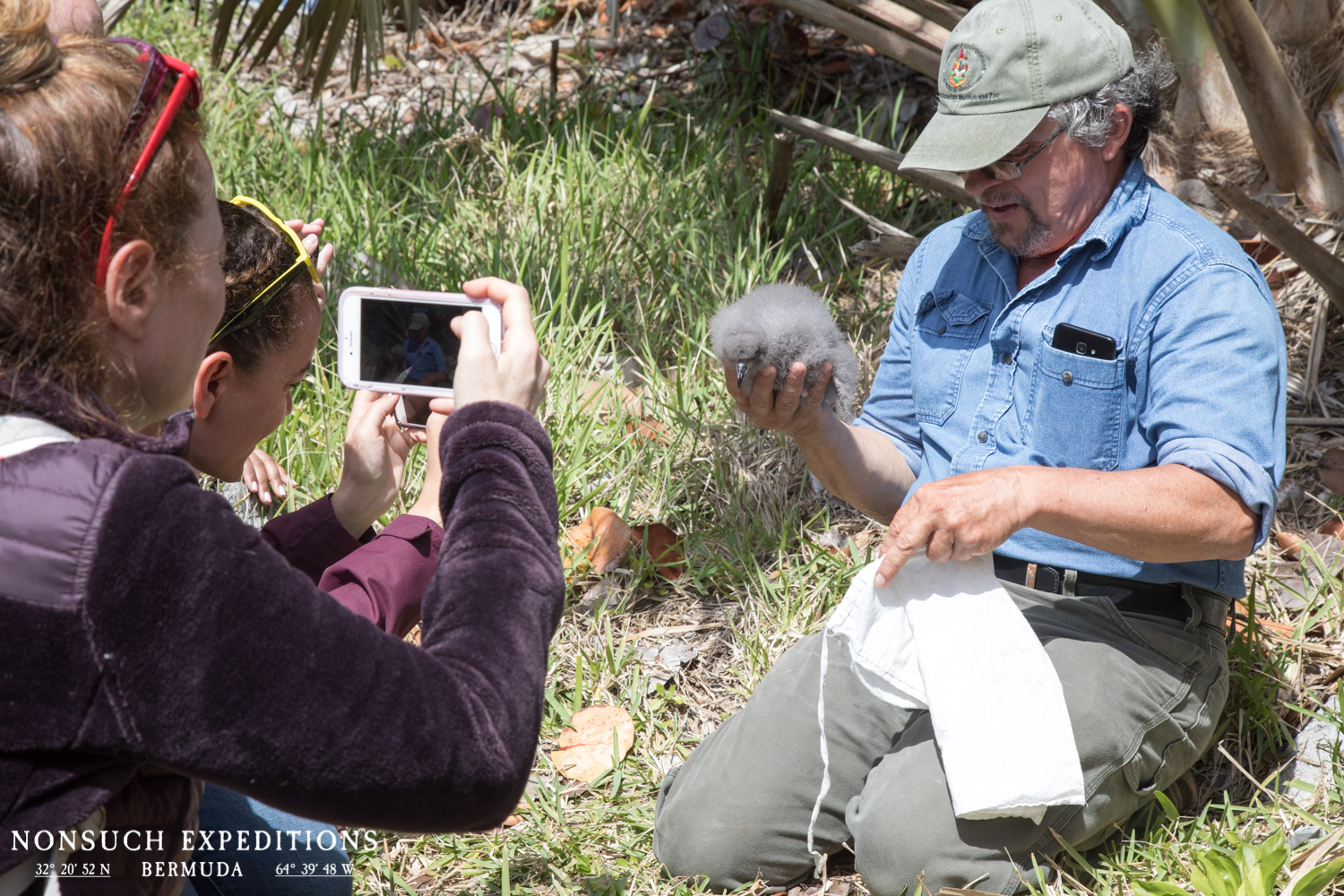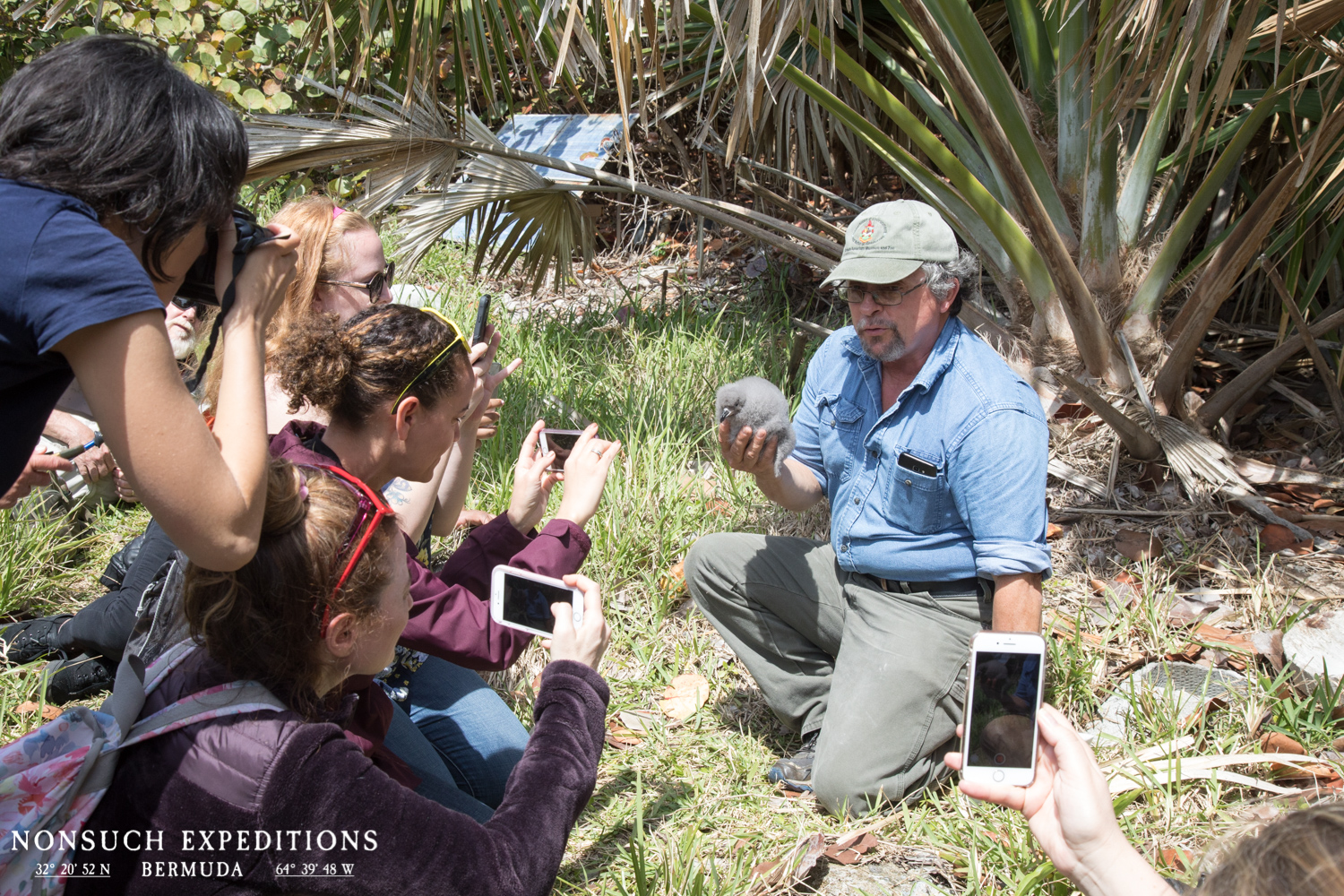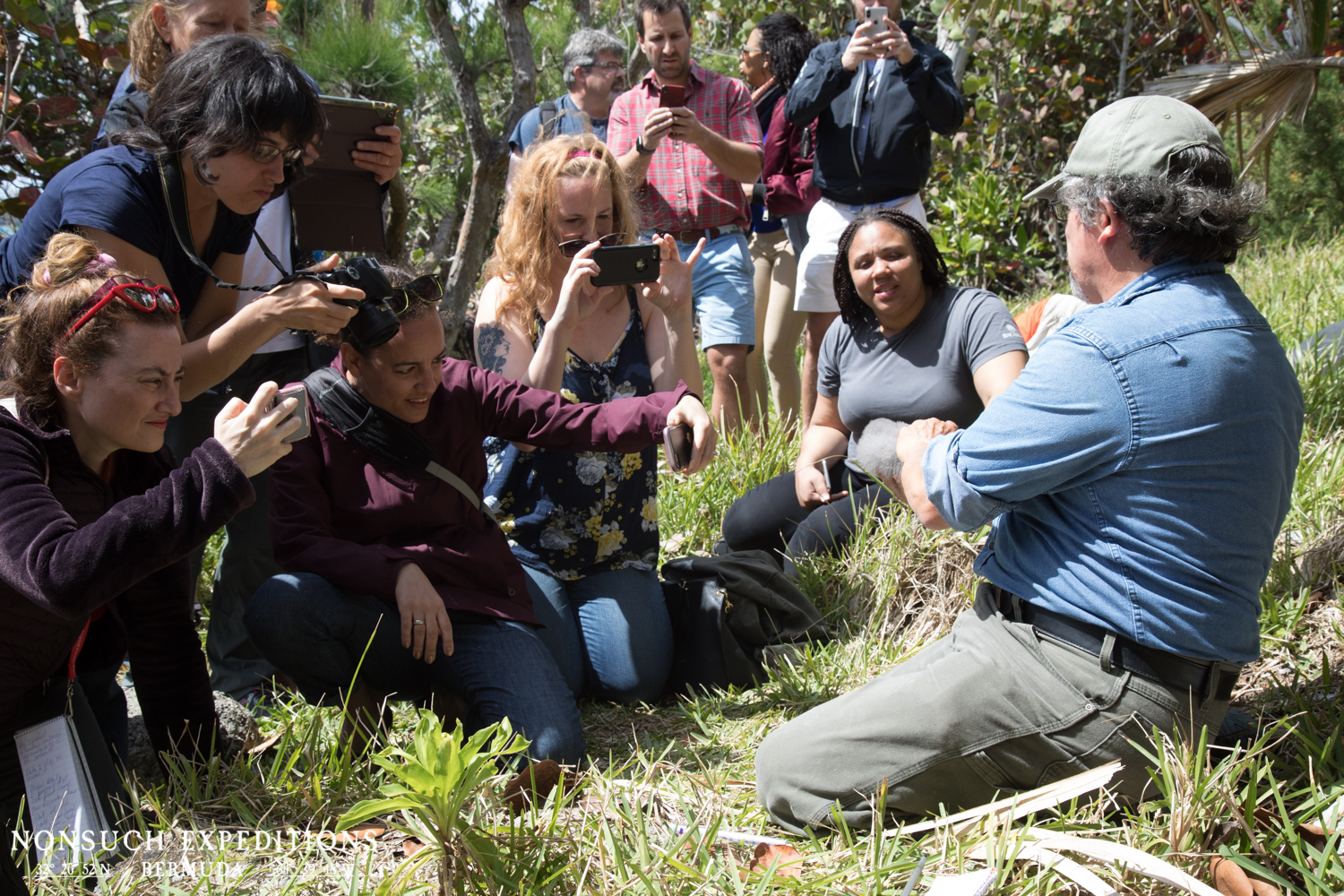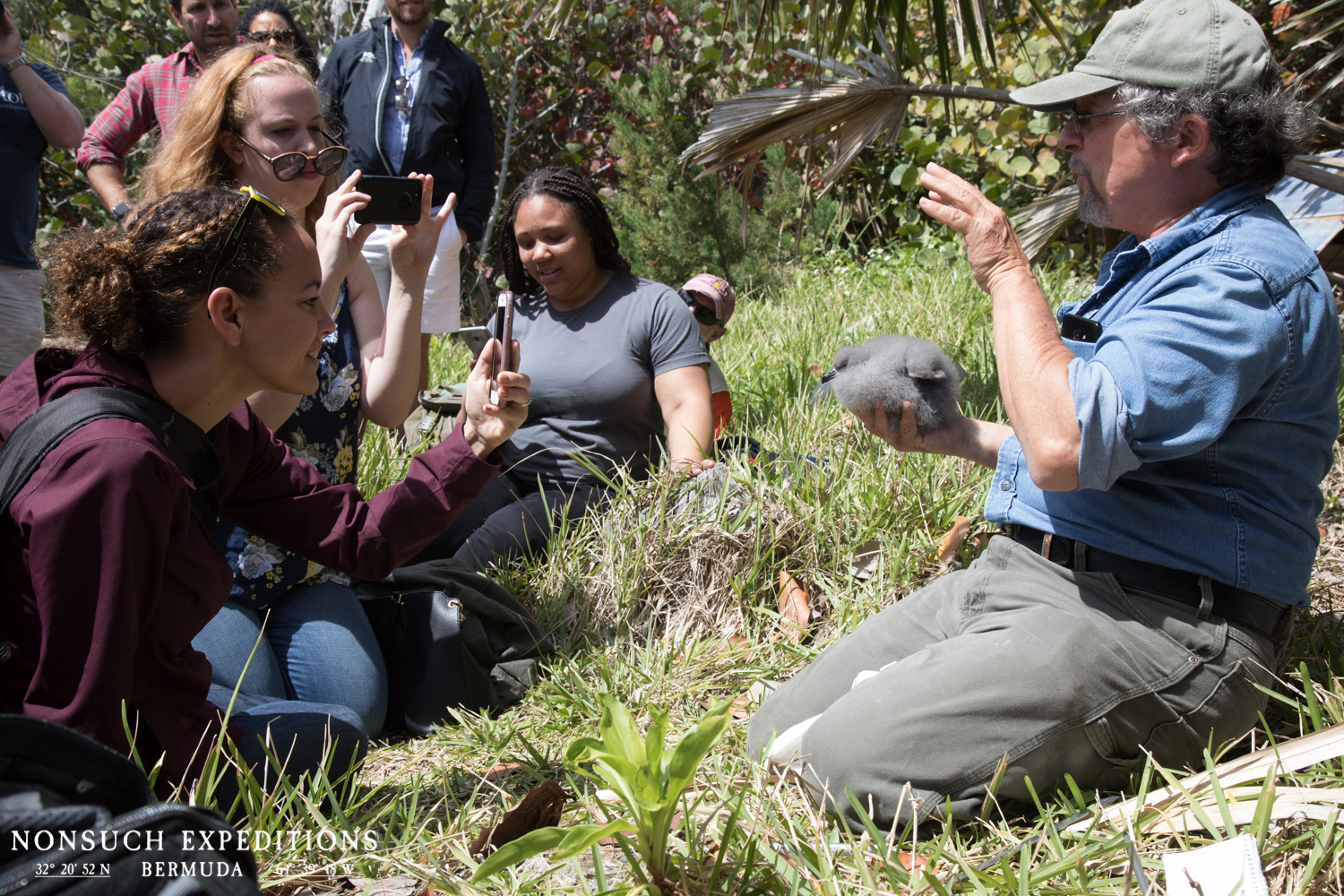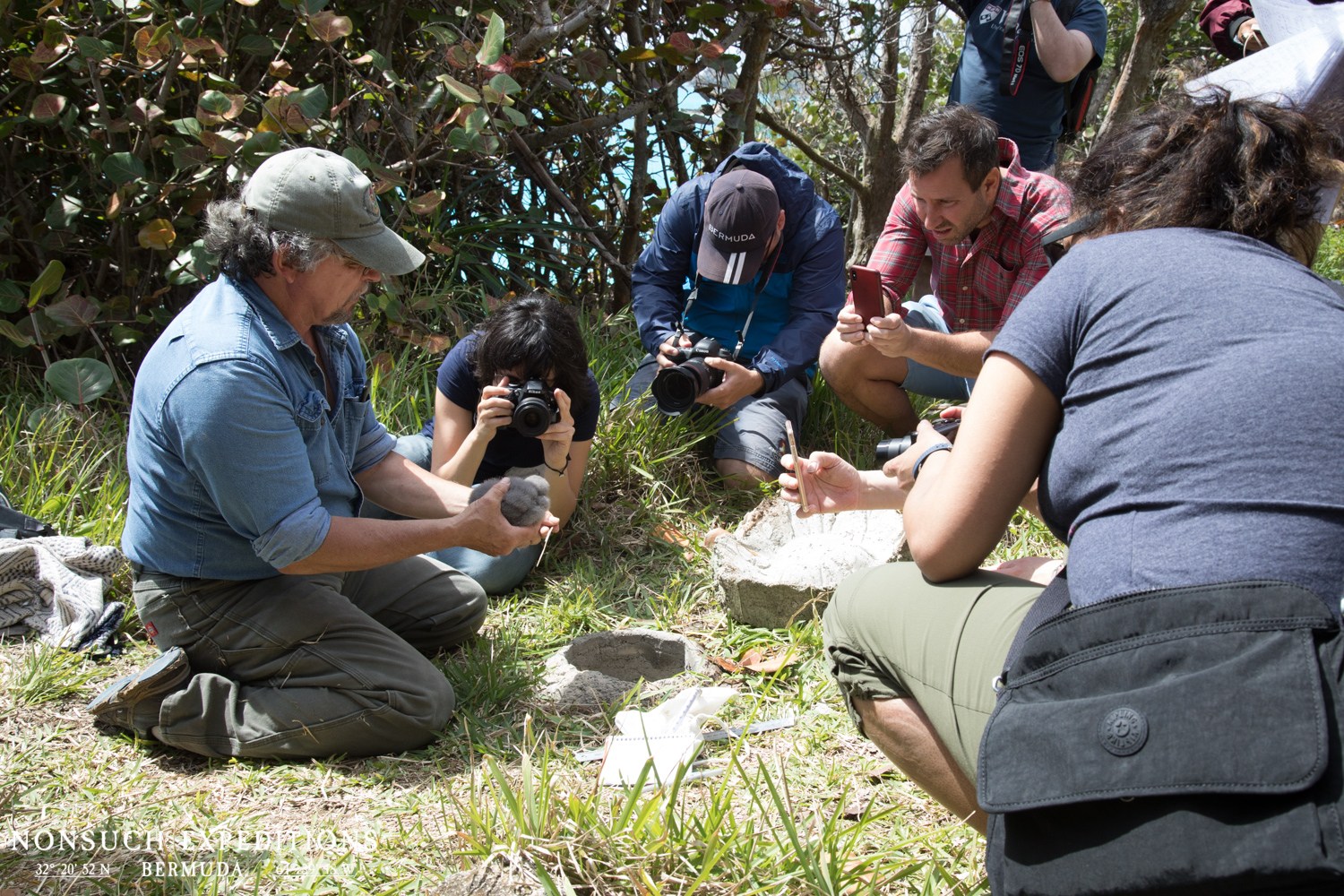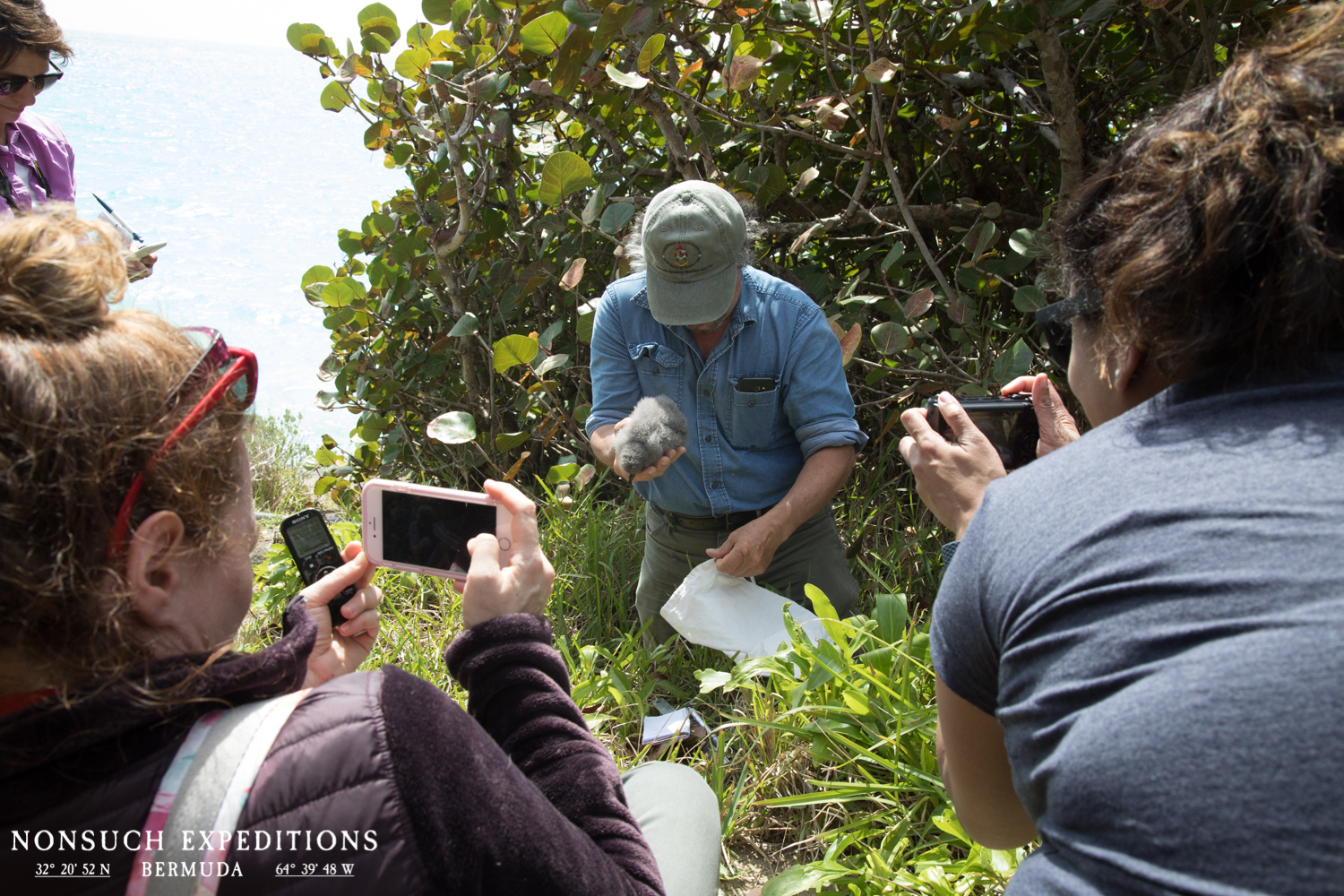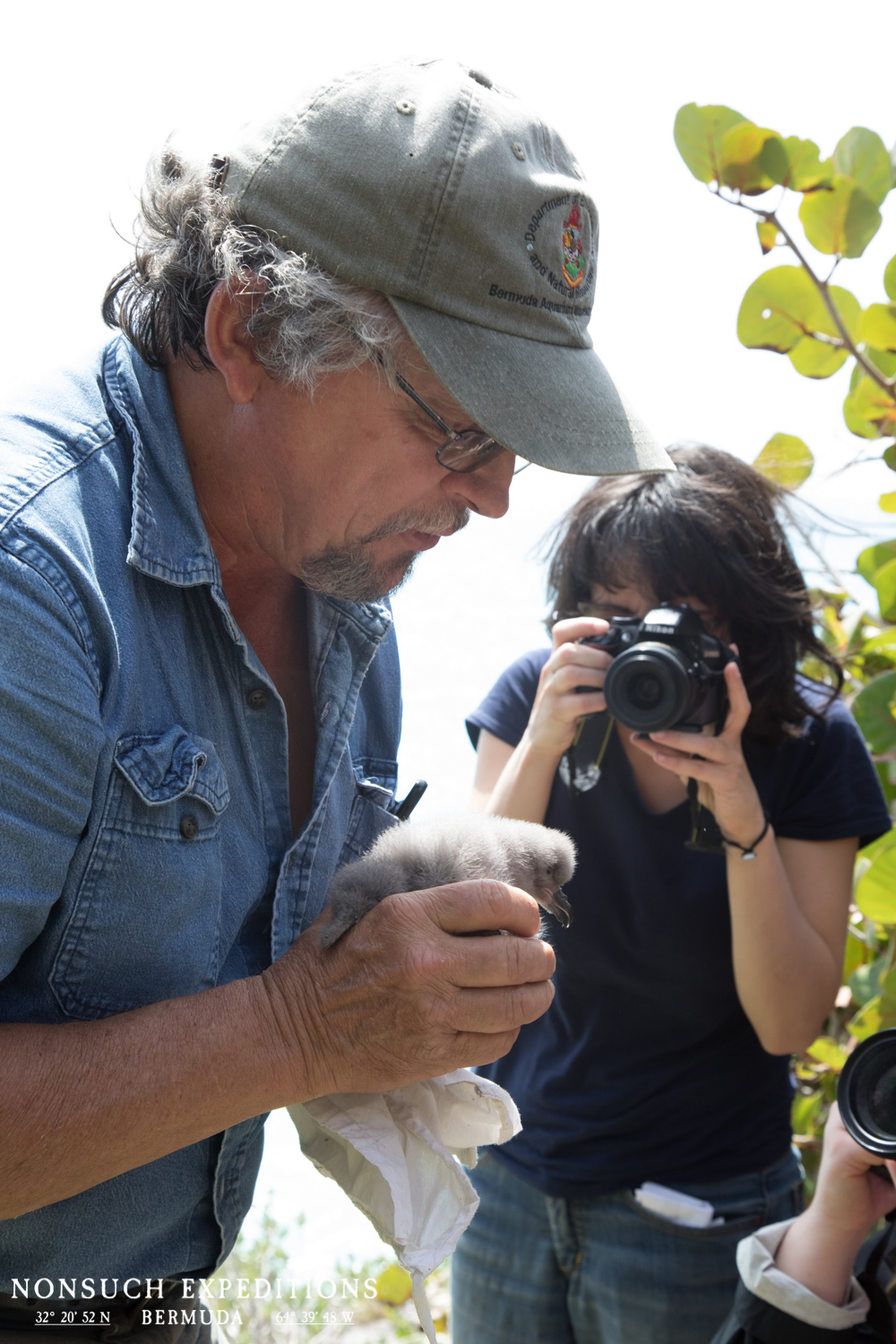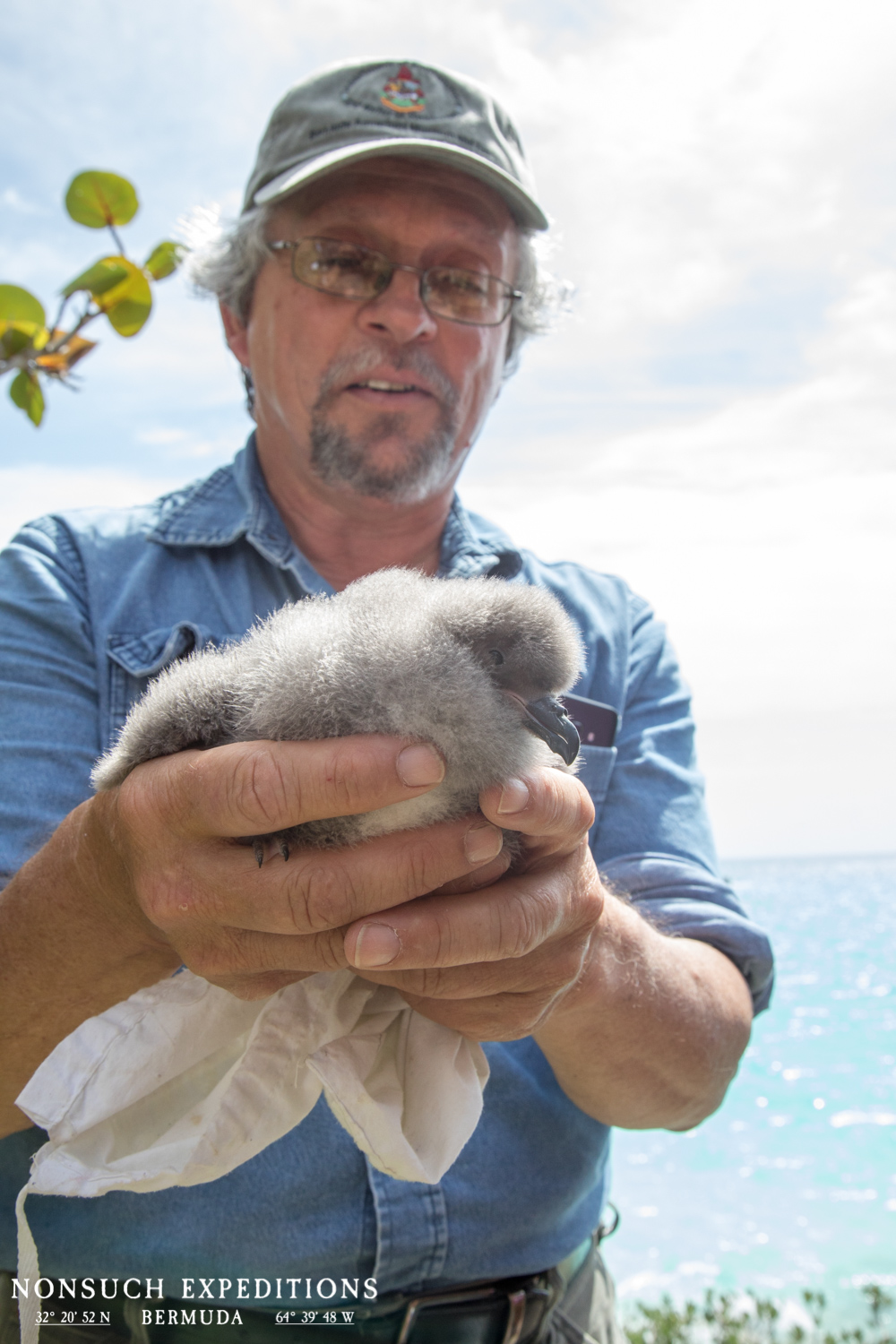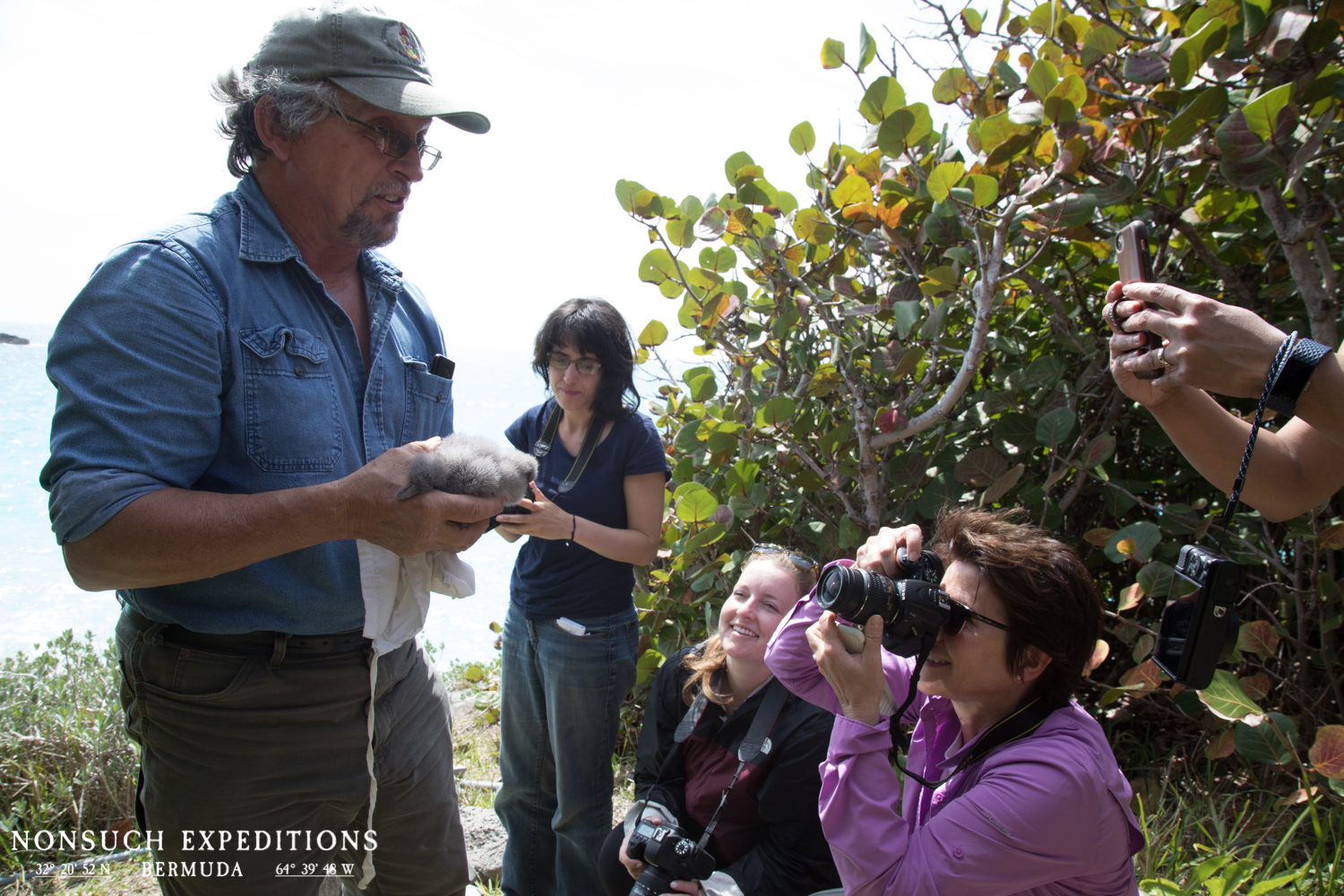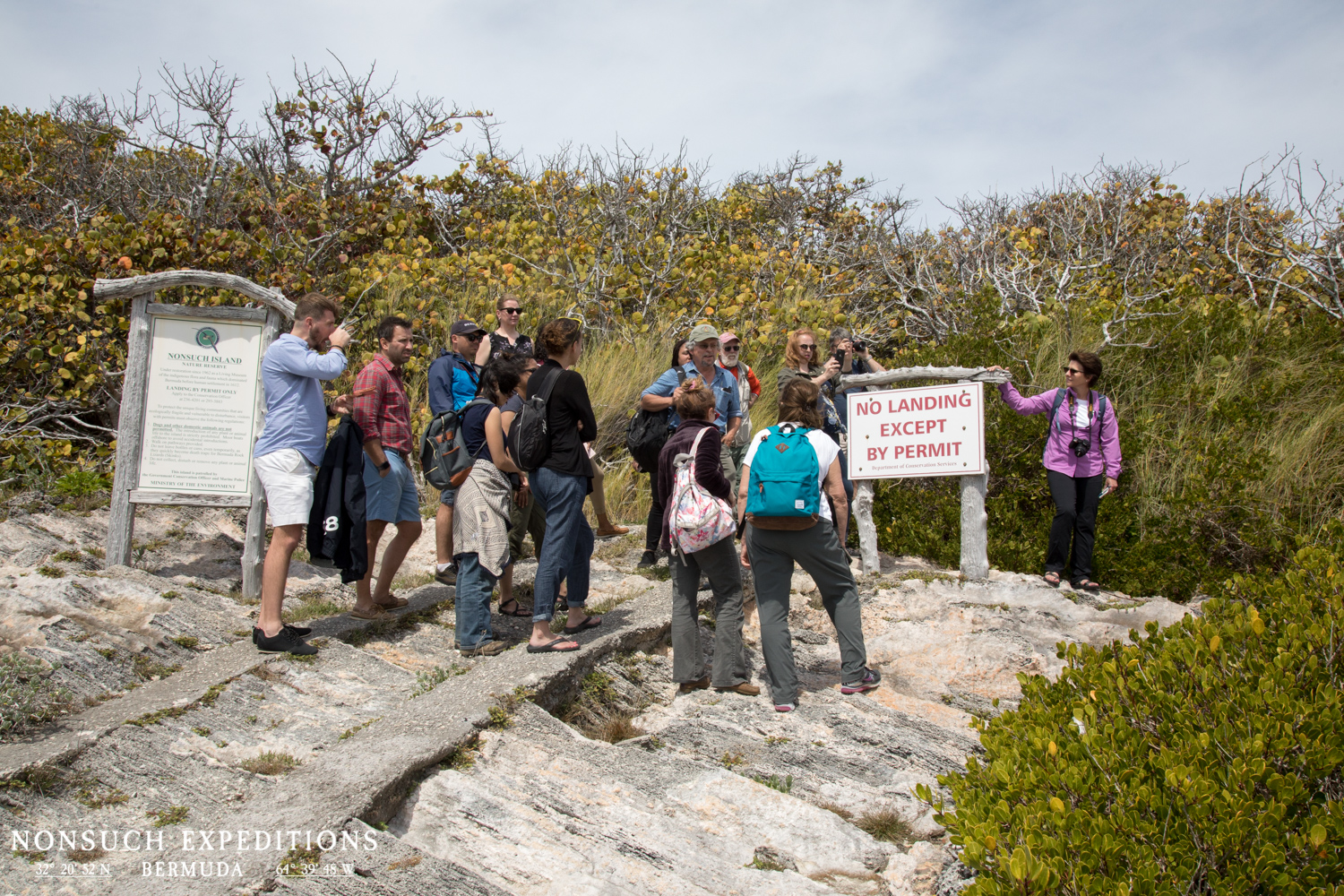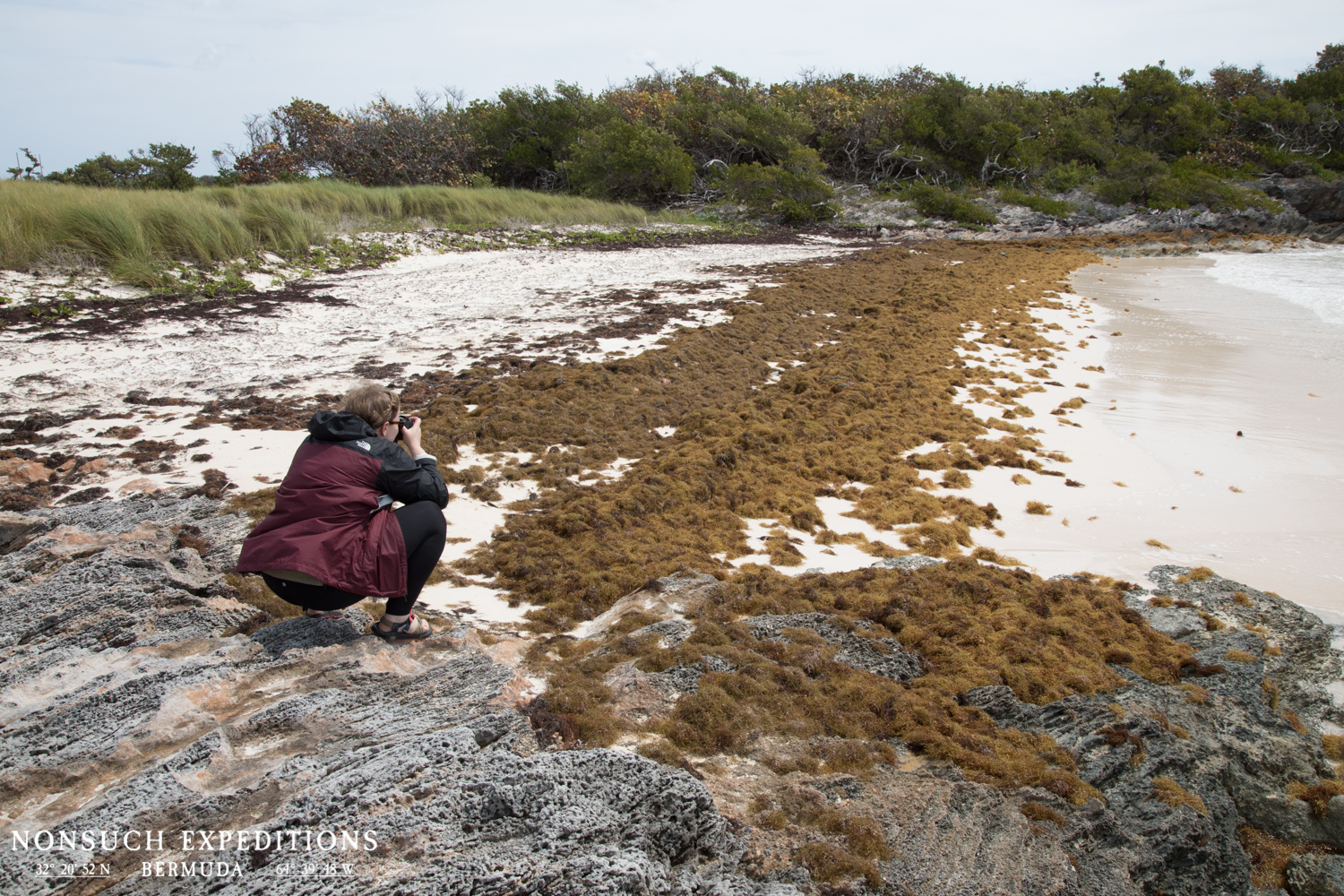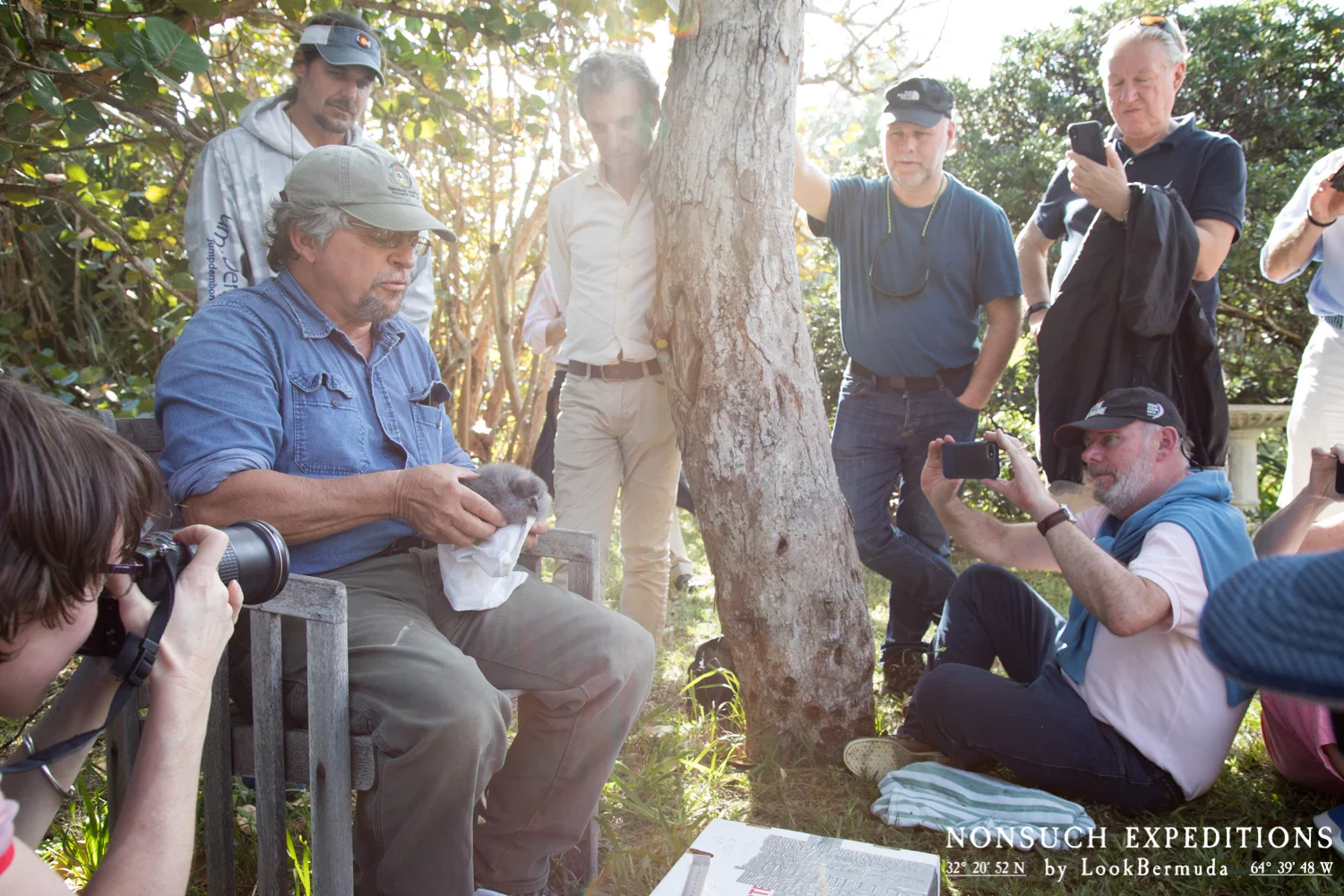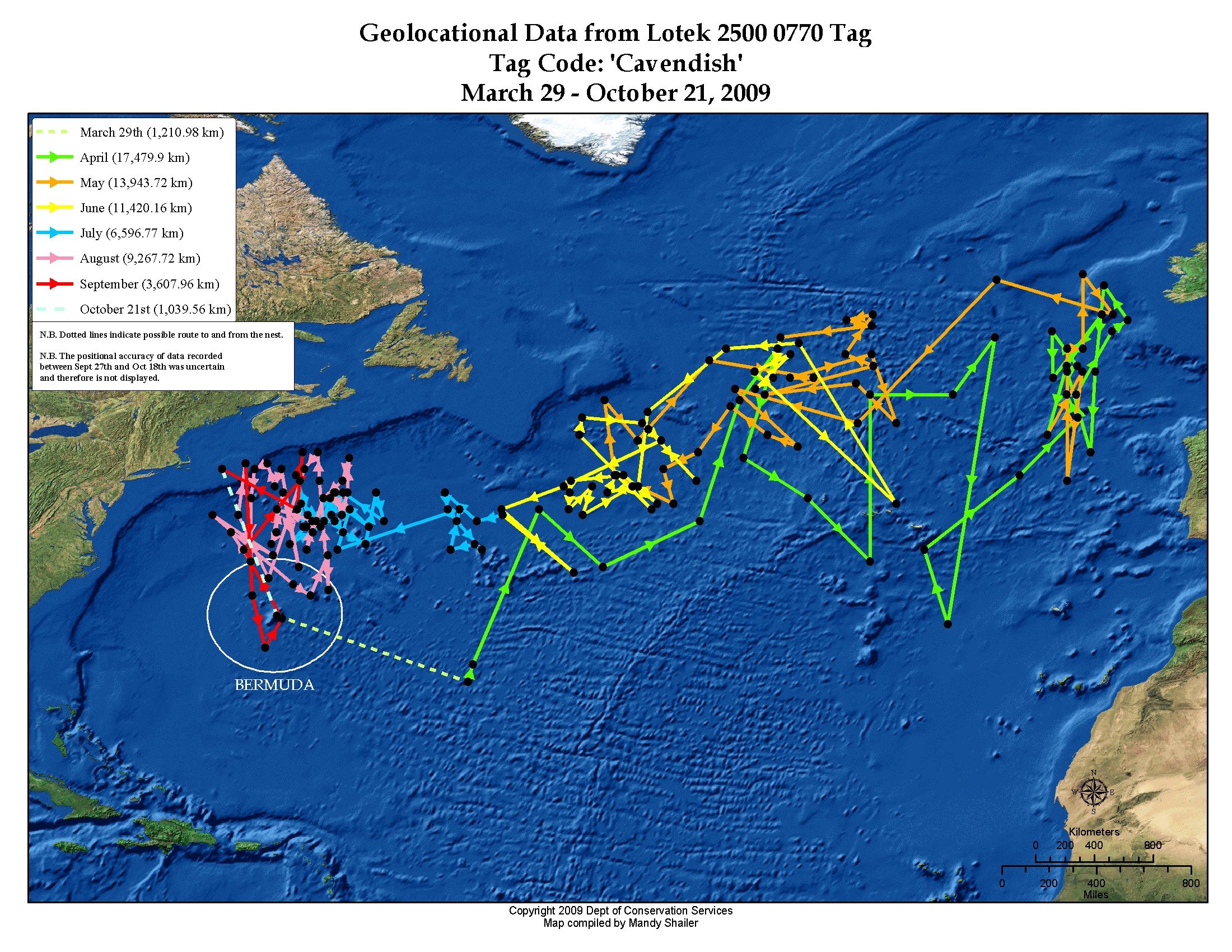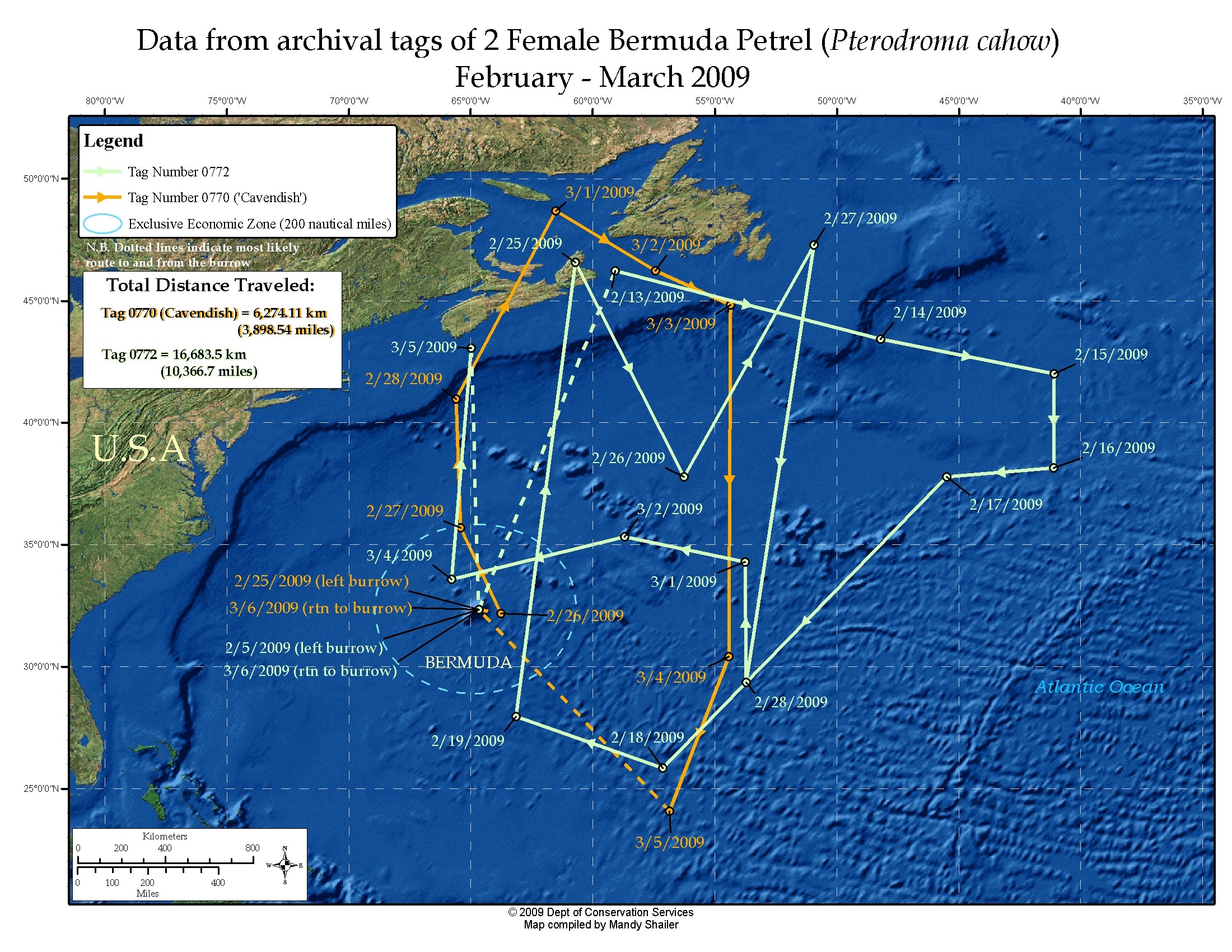For the third year in a row, a very lost and lonely Storm-petrel has been building a nest and trying to attract a mate to the Cahow Colony on Nonsuch Island.
As far as we know, this is the first time a Storm-petrel has attempted this, as although they are found offshore of the island in deeper waters, they have never been known to nest or even land on Bermuda, with their closest nesting colonies being 800 miles away on islands off the coast of Maine and Nova Scotia.
The last 2 seasons he was filmed arriving into the recently vacated CahowCam burrow a few days after the resident Cahow chick had fledged and would spend the next few weeks building a nest and calling out at night for a mate, ultimately in vain.
This year however, he arrived 2 months early and moved into the still occupied CahowCam 2 burrow which he decided to cohabitate with a very patient Cahow chick.
Much to the bewilderment of scientists and the worldwide CahowCam followers, he turned his amorous attentions to the Cahow chick despite it eventually growing to almost 10 times his weight. However the adult Cahows, when encountering the Storm-petrel in the nest during their feeding visits, did not seem to consider him as a threat to their chick and tolerated his presence.
The Nonsuch Team kept a close eye on this to be sure that the Cahow chick that was doing its best to ignore him wasn’t being negatively affected and even tried re-homing him to an empty Cahow burrow after he was caught and banded, as seen in the following video.
Despite this attempt he returned to the CahowCam 2 burrow the following night where he remained through to the Cahow chick fledging a few weeks ago.
J-P Rouja | Nonsuch Expeditions Team Leader: “There was even some talk amongst our followers to start a Go Fund Me Campaign to buy Stormy a plane ticket back to where he should be nesting. But as Jeremy pointed out, even if it had been logistically possible, the most that it would probably prove would be how fast he could actually fly back here once released.”
Ultimately his rather annoying persistence did not seem to affect the chick which put on weight faster and grew larger than most others in the colony, though this may have been in part due to the parents more frequent visits to keep an eye on Stormy.
Now back on his own, he has reverted to his old routine of nest building and calling our for a mate of his own and viewers who log on to the CahowCam around 1 AM (or scroll back in the video timeline in the AM) can watch him LIVE.



